Ever found yourself at a loss for words when trying to describe the taste of a glass of wine? Fear not, because we are here to demystify the world of wine for you. This collection of wine jargon will help you understand the complicated language of wine, giving you the tools you need to skillfully traverse the vineyards in Long Island, New York, whether you’re a newbie wine aficionado or someone looking to wow your friends at the next wine tasting. Get ready to expand your wine vocabulary and enhance your tasting experience as you unlock the secrets behind the swirling, sniffing, and sipping of this beloved beverage.
The Basics of Wine Tasting
Understanding Wine Tasting Terms
When it comes to wine tasting, there are specific terms and vocabulary that wine enthusiasts use to describe their sensory experiences. From “body” to “finish,” familiarizing yourself with these terms will enhance your ability to communicate and appreciate wine. We will explain the meaning behind common wine-tasting terms, such as acidity, tannin, and balance, so you can confidently discuss and analyze the wines you encounter.
Developing Your Sense of Taste
Just like any skill, developing your palate takes time and practice. We will guide you through the process of training your taste buds, from focusing on the different taste sensations to understanding the role of texture in wine. By honing your sense of taste, you will be able to detect subtle flavors and nuances in various wines, allowing you to fully enjoy and appreciate the complexity of each glass.
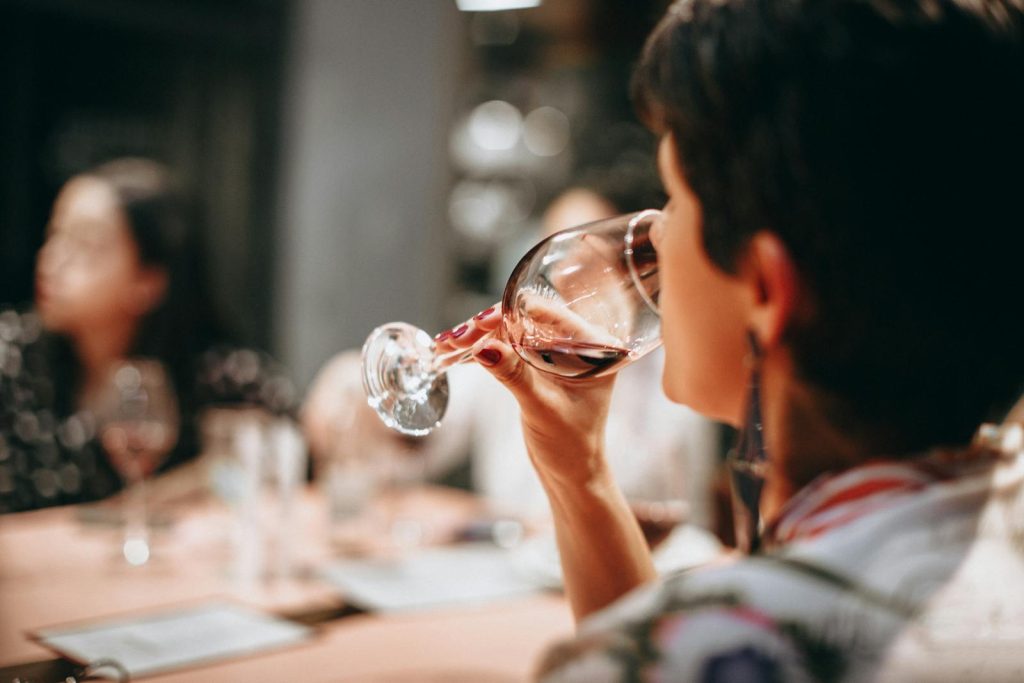
The Importance of Smell in Wine Tasting
Believe it or not, your sense of smell plays a crucial role in wine tasting. Aromas can provide valuable clues about a wine’s flavor profile and quality. We will explore the significance of different wine aromas and how to identify and describe them. By training your nose to recognize the various scents in wine, you will enhance your ability to fully experience and savor each sip.
Assessing Appearance and Color
The visual aspect of wine is more than just aesthetics. The color and appearance of a wine can provide valuable insights into its age, grape variety, and even winemaking techniques. We will discuss how to evaluate a wine’s color, clarity, and consistency, empowering you to make initial observations about a wine before even taking your first sip.
Evaluating Wine’s Structure and Balance
Wine structure and balance refer to how the components of a wine, such as acidity, tannins, alcohol, and sweetness, interact with each other. Understanding these elements and their relationship to one another will give you a deeper appreciation for the craftsmanship and artistry involved in winemaking. We will explore how to assess a wine’s structure and balance, enabling you to determine if a wine is harmonious and well-crafted.
Wine Descriptors
Common Wine Descriptors
Wine enthusiasts often use specific descriptors to capture the essence of a wine’s flavor profile. Terms like fruity, floral, or oaky are commonly used to convey the different characteristics found in wines. We will introduce you to some of the most frequently used wine descriptors, helping you articulate your personal preferences and understand the descriptions provided by professionals and critics.
Understanding Flavor Profiles
A wine’s flavor profile encompasses the combination of tastes and aromas that make it unique. We will explore the primary flavor profiles found in wine, such as citrus, red fruit, and earthy, explaining the characteristics that define each profile. Understanding flavor profiles will enable you to identify your preferences and make more informed choices when selecting wines. The most typical flavor profiles are as follows:
- Sweet: Honey, ripe fruits, molasses.
- Sour: Citrus, green apple.
- Bitter: Bitter almond, quinine.
- Salty: Not typically used but can relate to mineral qualities.
Identifying Aromas and Bouquets
The aroma of wine can transport you to a whole new sensory experience. From fruity to herbal, wines offer a wide array of aromas that contribute to their overall character. We will guide you through the process of identifying and describing different wine aromas and bouquets, enhancing your ability to appreciate the intricate scents that wine has to offer. Here are the most common aroma and bouquet descriptors:
- Fruity: Apple, berry, peach, tropical fruits.
- Floral: Rose, violet, jasmine.
- Vegetal: Grass, bell pepper, eucalyptus.
- Earthy: Mushroom, wet soil, mineral.
- Spicy: Clove, cinnamon, black pepper.
- Herbal: Mint, thyme, lavender.
- Nutty: Almond, walnut.
- Woody: Oak, cedar, vanilla.
Texture and Body
In the intricate world of wine tasting, “texture” and “body” serve as pivotal descriptors that navigate the sensory journey of each sip, offering a tactile dimension that complements the bouquet of flavors and aromas. Texture refers to the tactile sensation a wine leaves on the palate, ranging from silky smooth to crisply refreshing or sumptuously creamy. Body, on the other hand, denotes the weight and overall feel of the wine in the mouth, categorized as light, medium, or full, each contributing to the wine’s character and complexity. Together, these descriptors guide enthusiasts in understanding the structure and depth of a wine, shaping the tasting experience into one that’s as rich and nuanced as the wine’s flavor profile itself. The following are the most typical body and texture descriptors:
- Light-bodied: Feels light on the palate; often refreshing.
- Medium-bodied: Offers a balance between light and full-bodied.
- Full-bodied: Rich and intense; often feels heavier.
- Creamy: Smooth and rich texture.
- Crisp: High acidity that feels refreshing and clean.
Acidity, Tannins, and Alcohol
Acidity, tannins, and alcohol constitute the backbone of a wine, intricately influencing its balance, structure, and overall impression on the palate. The acidity lends a wine its refreshing zest, a crucial element that can elevate the wine’s fruitiness and ensure longevity. Tannins, predominantly found in red wines, introduce texture and complexity, offering a spectrum from gently astringent to boldly drying sensations that evolve with aging. Alcohol, meanwhile, contributes to the body and warmth of the wine, subtly intertwining with flavors and aromas to enhance depth and intensity. Together, these components are the architects of a wine’s personality, crafting experiences that range from light and invigorating to robust and profound, each sip revealing the meticulous artistry behind winemaking. These are the most typical forms of alcohol, tannins, and acidity terms:
- Acidic: Tart, zesty; a quality that adds freshness.
- Tannic: Astringent, drying sensation from tannins (more common in red wines).
- Hot: High alcohol content that gives a warming sensation.
Aging Potential and Condition
The aging potential and condition of a wine are critical factors that shape its evolution, narrative, and ultimately, its enjoyment. A wine’s journey from vine to bottle is just the beginning; its potential to mature, develop, and transform over time unveils layers of complexity and character that only patience can reveal. Aging potential indicates a wine’s capacity to improve with time, a promise of enhanced aromatics, softened tannins, and a harmonious balance emerging from years of careful cellaring. The condition of the wine, whether young and vibrant, mature and nuanced, or compromised by elements like oxidation or cork taint, tells a story of its past and forecasts its future. Understanding these aspects allows enthusiasts and collectors to navigate the intricate dance between time, nature, and craftsmanship, exploring the profound impact of age on the essence of wine. The most prevalent aging potential and conditions descriptors are as follows:
- Young: Fresh and vibrant, often with more pronounced fruity and floral notes.
- Mature: Developed, with more complexity and subdued fruitiness.
- Oxidized: Exposure to oxygen leads to a loss of freshness and undesirable flavors.
- Corked: Contaminated with cork taint, giving an unpleasant musty, or moldy character.
Tasting Notes and Descriptions
Whether you’re reading a wine review or discussing a wine with a friend, being able to understand and interpret tasting notes and descriptions is essential. We will provide you with guidance on reading and interpreting wine descriptions, allowing you to make more informed decisions and engage in meaningful conversations about the wines you encounter.
Wine Varietals
Understanding Different Wine Varietals
Wine comes in a dazzling array of varietals, each offering its own unique characteristics. From Chardonnay to Cabernet Sauvignon, we will introduce you to the most common wine varietals, explaining their flavor profiles, regions of origin, and the food pairings that complement them best. Understanding different varietals will open up a world of possibilities as you explore the diverse offerings of the wine world.
Tasting and Describing White Varietals
White varietals offer a refreshing and diverse range of flavors and aromas. We will delve into the specifics of white wine varietals, discussing their flavor profiles, typical regions of production, and food pairings that enhance their characteristics. Armed with this knowledge, you will be able to confidently select and describe white wines that suit your preferences.
Tasting and Describing Red Varietals
Red varietals are known for their depth, complexity, and ability to age. We will take a closer look at the characteristics of red wine varietals, including their flavor profiles, typical regions, and ideal food pairings. By understanding the nuances of red wine varietals, you will be able to appreciate the rich flavors and textures that these wines have to offer.
Exploring Lesser-Known Varietals
While popular varietals often dominate the market, there is a whole world of lesser-known grape varieties waiting to be discovered. We will introduce you to some hidden gems and lesser-known varietals, discussing their unique qualities and why they are worth exploring. Expand your wine horizons and uncover new favorites by venturing beyond the mainstream varietals.
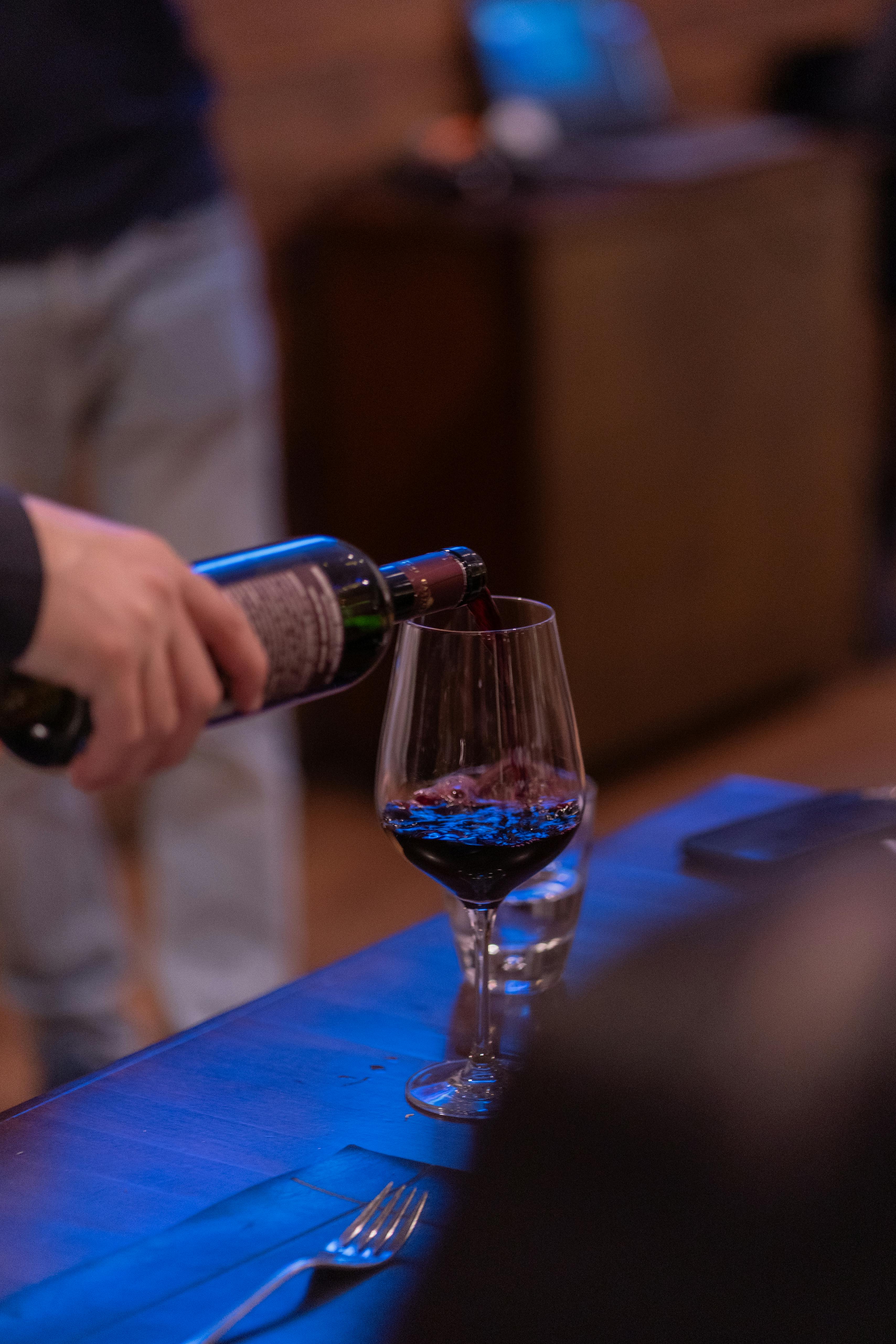
Wine Regions
Decoding Wine Labels
Wine labels can sometimes be overwhelming with information, but they contain valuable clues about a wine’s origin, quality, and specific production details. We will guide you through the different elements of a wine label, helping you understand the significance of terms like appellation, vintage, and producer. Decoding wine labels will empower you to make informed decisions when selecting wines from different regions.
Popular Wine Regions
There are renowned wine regions around the world that consistently produce exceptional wines. From Napa Valley to Bordeaux, we will take a virtual journey to some of the most acclaimed wine regions, highlighting their unique characteristics and flagship varietals. Learn about the factors that contribute to the distinctiveness of each region and how they shape the wines that emerge from their vineyards.
Regional Wine Characteristics
Each wine region has its own climate, soil, and grape-growing traditions, resulting in wines with distinct characteristics. We will explore how these regional factors influence a wine’s flavor profile, structure, and overall style. Understanding regional wine characteristics will allow you to appreciate the diversity of wines and develop a deeper understanding of the wine world.
Climate and Terroir’s Influence on Wine
The concept of terroir, which encompasses the natural factors that influence a wine’s characteristics, is highly regarded in the wine world. We will delve into the role of climate, soil, and other environmental factors in shaping a wine’s terroir. By understanding how terroir impacts wine, you will gain a deeper appreciation for the relationship between nature and winemaking.
Wine Production and Aging
The Winemaking Process
Winemaking is a complex and intricate process that involves multiple stages, from harvesting the grapes to bottling the finished wine. We will provide an overview of the winemaking process, discussing key steps such as fermentation, aging, and clarification. Understanding the winemaking process will give you insight into the craftsmanship and techniques employed by winemakers to create exceptional wines.
The choice between wood (often oak) and stainless steel fermenters and aging vessels significantly influences the flavor profile, texture, and overall character of the wine. Each material imparts distinct characteristics due to its physical properties and interaction with the wine during fermentation and aging.
Wood (Oak) Fermentation and Aging
- Flavor Profile: Wood, especially oak, introduces a range of flavors to wine that can include vanilla, coconut, toast, spice (like clove or cinnamon), and smoke. The specific flavors depend on the type of oak (American, French, Hungarian, etc.), the level of toast on the barrels, and whether the barrels are new or used.
- Texture and Complexity: Oak barrels allow for a slight exchange of oxygen with the wine, a process called micro-oxygenation. This softens the wine’s tannins and can contribute to a smoother, rounder mouthfeel. The porosity of wood also encourages the development of more complex, nuanced flavors over time.
- Impact on Color: For red wines, the micro-oxygenation can lead to a slight intensification of color. Over a long period, however, aging in wood can contribute to color stabilization and, eventually, to a gentle fading of color in very aged wines.
Stainless Steel Fermentation and Aging
- Flavor Preservation: Stainless steel is inert, meaning it doesn’t impart additional flavors to the wine, allowing the grape’s natural flavors and the terroir’s characteristics to shine through. Wines fermented and aged in stainless steel tend to have a crisper, fruitier profile, with more pronounced acidity.
- Texture: Without the micro-oxygenation process that occurs in oak barrels, wines aged in stainless steel retain more of their natural acidity, contributing to a sharper, more defined texture. The lack of oak influence preserves the wine’s freshness and can emphasize mineral qualities, especially in white wines.
- Consistency and Control: Stainless steel provides a completely controlled environment, free from the influence of external flavors or oxygen (beyond what’s deliberately introduced). This can be particularly advantageous for producing wines that aim to highlight varietal purity and precision.
The choice between oak and stainless steel fundamentally comes down to the winemaker’s goals for the wine’s style and expression. Oak can add depth, complexity, and a range of flavors that are sought after in many full-bodied reds and some whites. Stainless steel, by contrast, is chosen to preserve the crisp, fresh fruit qualities of the grape, often used in the production of light, refreshing white wines and rosés. Both methods have their place in the winemaking world, offering different avenues for winemakers to express their craft and for wine enthusiasts to explore a wide range of sensory experiences.
Understanding Oak Aging
Oak aging is a technique commonly used in winemaking to enhance a wine’s flavor, texture, and complexity. We will explore the impact of oak aging on wine, discussing the different types of oak used, as well as the flavors and aromas it imparts. By understanding oak aging, you will be able to appreciate the unique qualities that this technique brings to certain wines.
Unveiling Wine Aging Potential
Not all wines are meant to be consumed immediately. Some wines benefit from aging, allowing them to develop richer flavors and greater depth over time. We will guide you through the process of understanding a wine’s aging potential, discussing the factors that contribute to a wine’s ability to evolve and improve with time. Unlocking the secrets of wine aging will enable you to make more informed decisions on when to open a bottle and when to cellar it for future enjoyment.
Wine Styles and Aging
Different wine styles have varying aging requirements and capabilities. From young and fresh wines to those specifically crafted for extensive aging, we will explore the different wine styles and how aging impacts their characteristics. Discover the optimal aging periods for different wine styles and find out which styles are best enjoyed in their youth.

Wine and Food Pairing
Principles of Wine and Food Pairing
Pairing wine with food is an art that can elevate both the dining experience and the enjoyment of the wine itself. We will delve into the principles of wine and food pairing, discussing key considerations such as intensity, acidity, and flavor profiles. By understanding the fundamentals of wine and food pairing, you will be able to create harmonious combinations that enhance the flavors of both the wine and the dish.
Matching Wine with Different Flavors
The world of cuisine is vast and diverse, with countless flavors waiting to be explored. We will guide you through the process of pairing wine with different flavor profiles, whether it’s spicy, sweet, or savory. Learn which wines complement specific flavors and unlock the magic of creating a balanced and memorable dining experience.
Pairing Wine with Different Cuisines
With global cuisine becoming more accessible, the art of pairing wine with various cuisines has become increasingly important. We will explore how different wines interact with flavors from around the world, from Italian pasta dishes to spicy Thai cuisine. Enhance your culinary adventures by understanding which wines best accompany different types of international fare.
Wine Events and Tastings
Participating in Wine Events
Wine events offer the perfect opportunity to immerse yourself in the world of wine, whether it’s a wine festival, a winery tour, or a tasting event. We will discuss the benefits of attending wine events, from expanding your knowledge to discovering new wines and meeting fellow wine enthusiasts. Learn how to navigate wine events with confidence and make the most of your experience.
Joining Wine Tastings
Wine tastings provide a unique opportunity to explore a variety of wines in a structured and educational setting. We will guide you through the process of participating in wine tastings, from understanding tasting formats to developing your own tasting notes. Unlock the secrets to evaluating and appreciating wines like a seasoned wine connoisseur.
Recognizing Wine Faults
Wine faults can occur due to various factors and can significantly impact a wine’s quality and enjoyment. By familiarizing yourself with common wine faults, such as cork taint or oxidation, you will be able to detect and identify the presence of faults in a wine. Understanding wine faults will empower you to make informed decisions when purchasing or evaluating wines.
Wine Buying and Collecting
Understanding Wine Labels and Designations
Navigating the world of wine buying can be intimidating, especially when faced with a myriad of labels and designations. We will demystify the information found on wine labels, including the significance of terms like vintage, reserve, and appellation. Understanding wine labels will enable you to make confident buying decisions and choose wines that align with your preferences.
Buying Wine from Different Sources
Whether you’re purchasing wine from a local wine shop or exploring online retailers, understanding where and how to buy wine is essential. We will discuss different sources for buying wine, outlining the pros and cons of each. From traditional brick-and-mortar stores to online platforms, discover the best channels for acquiring the wines you desire.
Tips for Starting a Wine Collection
Building a wine collection can be a rewarding and enjoyable endeavor. We will provide you with tips and guidance on how to start your own wine collection, from identifying your wine preferences to establishing a budget and storage options. Explore the world of collecting wines and embark on a journey of discovering hidden gems and aged treasures.
Storing and Cellaring Wine
Proper storage and cellaring of wine are crucial to maintaining its quality and ensuring optimal aging potential. We will delve into the principles of wine storage, discussing factors such as temperature, humidity, and light exposure. Understanding how to store and cellar wine will allow you to preserve the integrity of your collection and experience the evolution of wines over time.
Conclusion
Congratulations, you’ve completed the beginner’s guide to understanding wine speak! Armed with knowledge about wine tasting, descriptors, varietals, regions, production and aging, wine and food pairing, events and tastings, wine buying, and collecting, as well as the wine industry and career opportunities, you are now equipped to confidently explore the world of wine. Remember, wine is meant to be enjoyed and shared, so take your newfound knowledge with you on your wine journey and savor the beautiful experiences that wine has to offer. Cheers!
© 2024 by LIWine.com. Reserved all rights. This document cannot be copied or communicated in any way without LIWine.com prior written consent, whether it be electronically, mechanically, through photocopying, recording, or another medium.
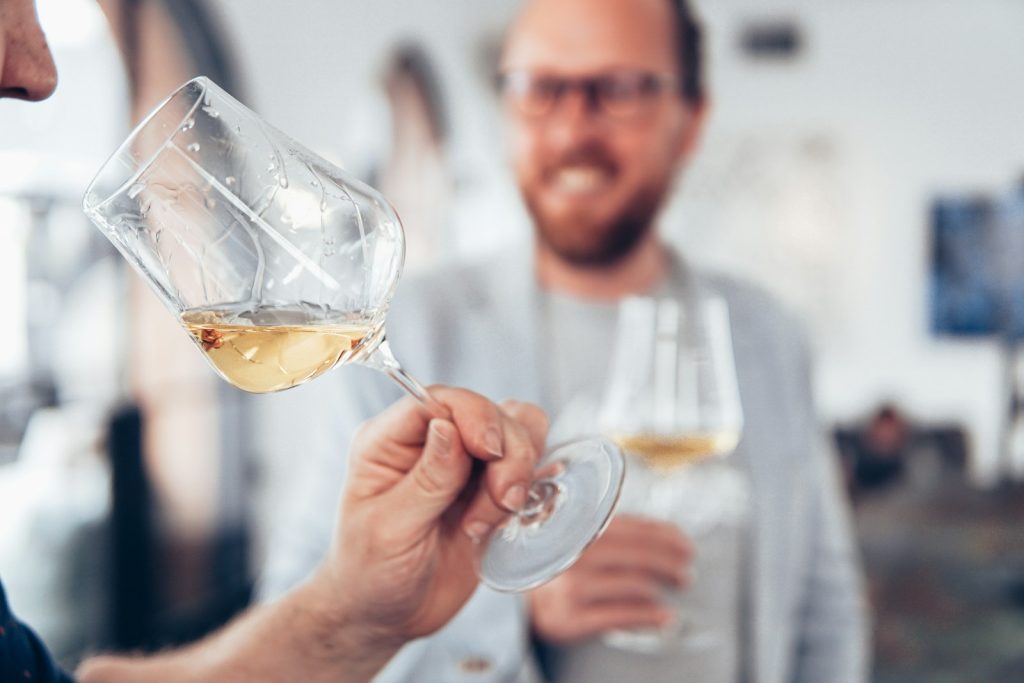
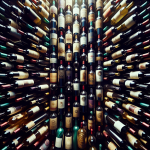
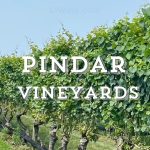
Leave a Reply
You must be logged in to post a comment.